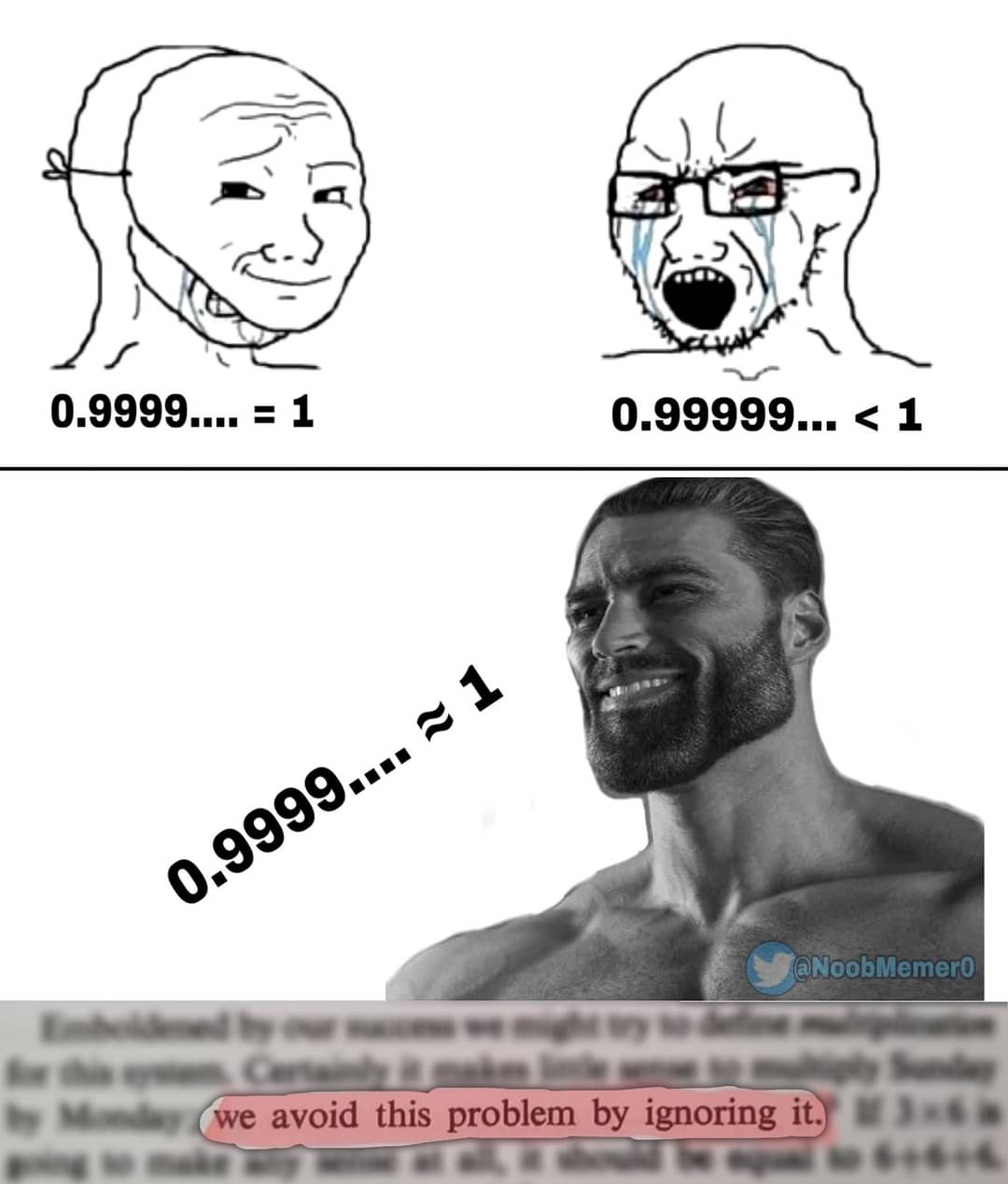this post was submitted on 27 Jun 2024
783 points (95.2% liked)
Science Memes
11764 readers
2510 users here now
Welcome to c/science_memes @ Mander.xyz!
A place for majestic STEMLORD peacocking, as well as memes about the realities of working in a lab.

Rules
- Don't throw mud. Behave like an intellectual and remember the human.
- Keep it rooted (on topic).
- No spam.
- Infographics welcome, get schooled.
This is a science community. We use the Dawkins definition of meme.
Research Committee
Other Mander Communities
Science and Research
Biology and Life Sciences
- [email protected]
- [email protected]
- [email protected]
- [email protected]
- [email protected]
- [email protected]
- [email protected]
- [email protected]
- [email protected]
- [email protected]
- [email protected]
- [email protected]
- [email protected]
- [email protected]
- [email protected]
- [email protected]
- [email protected]
- [email protected]
- [email protected]
- [email protected]
- [email protected]
- [email protected]
- [email protected]
- [email protected]
- !reptiles and [email protected]
Physical Sciences
- [email protected]
- [email protected]
- [email protected]
- [email protected]
- [email protected]
- [email protected]
- [email protected]
- [email protected]
- [email protected]
Humanities and Social Sciences
Practical and Applied Sciences
- !exercise-and [email protected]
- [email protected]
- !self [email protected]
- [email protected]
- [email protected]
- [email protected]
Memes
Miscellaneous
founded 2 years ago
MODERATORS
you are viewing a single comment's thread
view the rest of the comments
view the rest of the comments

Afaik, the Planck Length is not a "real-world pixel" in the way that many people think it is. Two lengths can differ by an amount smaller than the Planck Length. The remarkable thing is that it's impossible to measure anything smaller than that size, so you simply couldn't tell those two lengths apart. This is also ignoring how you'd create an object with such a precisely defined length in the first place.
Anyways of course the theoretical world of mathematics doesn't work when you attempt to recreate it in our physical reality, because our reality has fundamental limitations that you're ignoring when you make that conversion that make the conversion invalid. See for example the Banach-Tarski paradox, which is utter nonsense in physical reality. It's not a coincidence that that phenomenon also relies heavily on infinities.
In the 0.999... case, the infinite 9s make all the difference. That's literally the whole point of having an infinite number of them. "Infinity" isn't (usually) defined as a number; it's more like a limit or a process. Any very high but finite number of 9s is not 1. There will always be a very small difference. But as soon as there are infinite 9s, that number is 1 (assuming you're working in the standard mathematical model, of course).
You are right that there's "something" left behind between 0.999... and 1. Imagine a number line between 0 and 1. Each 9 adds 90% of the remaining number line to the growing number 0.999... as it approaches one. If you pick any point on this number line, after some number of 9s it will be part of the 0.999... region, no matter how close to 1 it is... except for 1 itself. The exact point where 1 is will never be added to the 0.999... fraction. But let's see how long that 0.999... region now is. It's exactly 1 unit long, minus a single 0-dimensional point... so still 1-0=1 units long. If you took the 0.999... region and manually added the "1" point back to it, it would stay the exact same length. This is the difference that the infinite 9s make-- only with a truly infinite number of 9s can we find this property.